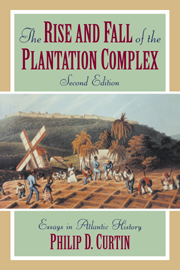7 - Anarchy and imperial control
Published online by Cambridge University Press: 05 June 2012
Summary
One peculiarity of the seventeenth century was the fact that the principal actors themselves shared an opaque uncertainty about the future of European activities overseas. In the sixteenth century, the main actors had been limited. In the east was the Portuguese trading post empire, designed to profit from booty or from trade, as the opportunity occurred. In the west was the Spanish empire, by the end of the century fully under Spanish government control but suffering from economic doldrums and the continuing decline of the native population. The Portuguese plantation economy in northeastern Brazil was smaller than either the true empire to the west or the trading post empire to the east.
The plantation complex had obvious weaknesses, the most obvious of which was the institution of slavery. After experimenting with Indian slavery, Spain had settled on the encomienda and other forms of forced labor in Spanish America. Northern Europeans did not practice slavery at home, even on the limited scale of Mediterranean Europe. Even in the Mediterranean basin, slavery was rare in agriculture, especially now that sugar planting had moved out into the Atlantic. In Brazil itself, the slave regime had the obvious weakness that deaths exceeded births, requiring a continuous supply of new labor. In retrospect, it is hard to see how such an obviously wasteful system could possibly fill any but a transitional role in American development.
- Type
- Chapter
- Information
- The Rise and Fall of the Plantation ComplexEssays in Atlantic History, pp. 86 - 97Publisher: Cambridge University PressPrint publication year: 1998

